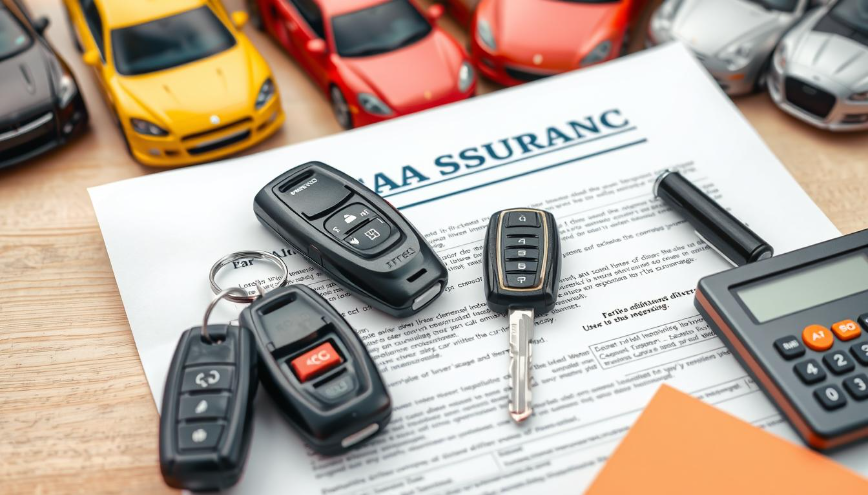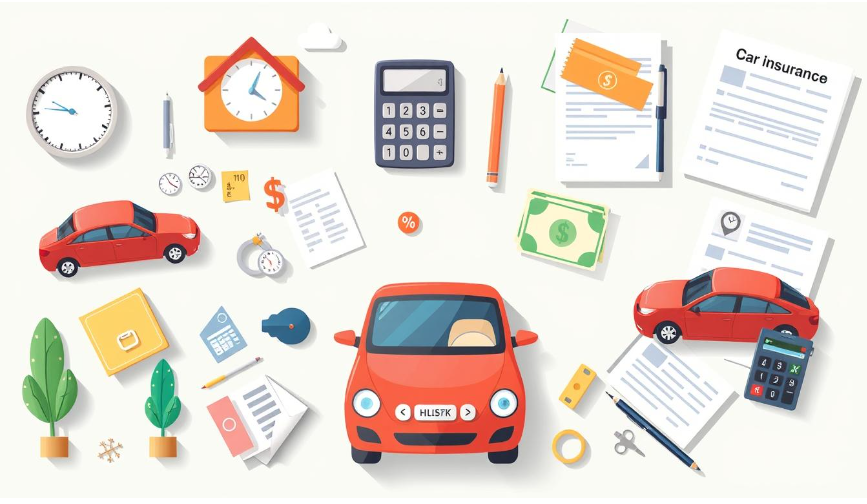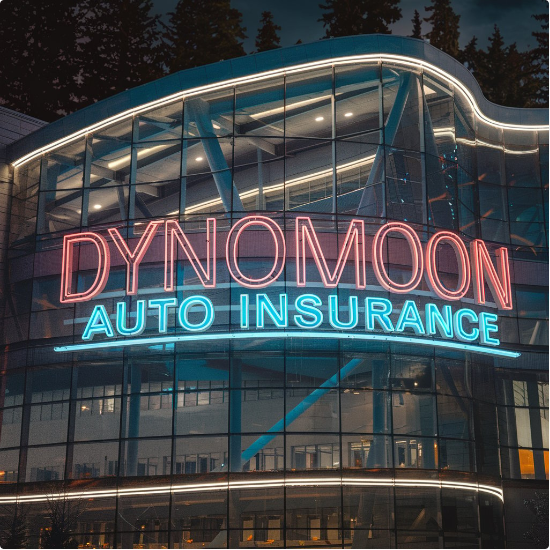Are you paying too much for your car insurance? The cost of coverage can change a lot between providers. Many drivers miss out on big savings by not comparing quotes.
But what if you could find the best auto insurance rates easily? Without spending hours looking around?
A visually engaging composition showcasing a variety of colorful car insurance quote documents scattered on a table, with a calculator and a car key beside them. The background features a blurred cityscape, symbolizing the modernity of car ownership. Soft lighting highlights the texture of the papers and the sleekness of the car key, creating a sense of financial decision-making and savings.
In this guide, we’ll dive into car insurance comparison. We’ll help you make smart choices and get the best coverage for your car. You’ll learn about the key parts of auto policies and what affects your premiums.
We aim to give you the tools to confidently explore the insurance world. You’ll be able to find the best deals without hassle.
Understanding the Basics of Auto Insurance Comparison
Protecting your vehicle and finances is key. Knowing how to compare auto insurance is essential. By understanding car insurance policies and the need to shop around, you can find the best deals for you.
Key Components of Car Insurance Policies
Car insurance policies have important coverage types. Liability coverage helps if you’re at fault in an accident. Collision and comprehensive cover your vehicle. Uninsured/underinsured motorist protection helps if the other driver doesn’t have insurance.
Why Shopping Around Matters
It’s vital to compare car insurance quotes from different providers. Car policy prices and premiums can differ a lot between insurers, even for the same coverage. By looking at various options, you can get the best value and protection for your vehicle.
| Insurance Provider | Average Annual Premium | Coverage Options |
|---|---|---|
| Insurer A | $1,200 | Liability, Collision, Comprehensive |
| Insurer B | $1,500 | Liability, Collision, Comprehensive, Roadside Assistance |
| Insurer C | $1,100 | Liability, Collision, Comprehensive, Rental Reimbursement |
Factors That Influence Your Vehicle Coverage Costs
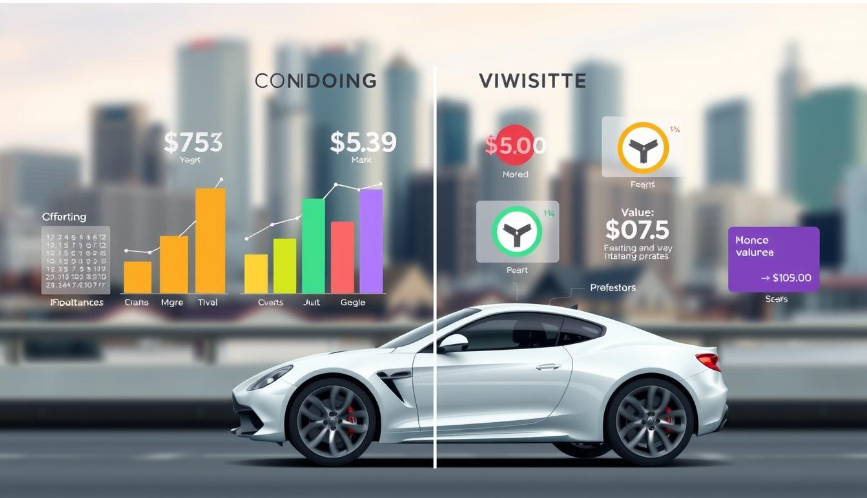
Several key factors can affect your vehicle coverage costs and automotive policy rates. Knowing these can help you save money on car insurance quotes. It’s all about making smart choices.
Your age is a big factor in vehicle coverage costs. Younger drivers often pay more because they’re seen as riskier. But, older drivers with safe driving records get lower rates.
Your driving history also matters a lot. A clean record means better vehicle coverage costs. But, accidents or tickets can raise your automotive policy rates a lot.
Where you live can also change your vehicle coverage costs. Insurers look at things like crime rates and accidents in your area. Urban areas or places with more accidents might have higher rates.
The car you drive is another big factor. Insurers check the make, model, age, and safety features. Cars that cost more to fix or are more likely to be stolen can have higher rates.https://www.youtube.com/embed/xEXyDMz6Byo
Knowing these factors can help you manage your vehicle coverage costs. Look for ways to save and compare automotive policy rates. This way, you can find the best deal for your needs.
How to Get the Best Car Insurance Quotes Online
Getting the best car insurance quotes online is now easier than ever. Online comparison tools help drivers save a lot on their insurance. Here are the top ways to find the best rates.
Top Comparison Websites
Many top websites can help you compare car insurance quotes. Some of the most trusted ones are:
- Esurance
- Geico
- Progressive
- Nationwide
- Allstate
Information Needed for Accurate Quotes
To get accurate quotes, you need to have some information ready:
- Vehicle details (make, model, year, mileage)
- Driver’s license number and driving history
- Current coverage limits and deductibles
- Estimated annual mileage
- Desired coverage options
Time-Saving Tips for Quote Collection
Getting multiple quotes can take time. But, there are ways to make it faster:
- Use comparison tools to input your information once and receive quotes from multiple providers
- Leverage bundling by getting quotes for home and auto insurance together
- Save time by updating your information on a single platform and allowing it to be shared with other insurers
By using these tips, you can quickly compare quotes. This way, you can find the best deal for your needs.
Understanding Different Types of Auto Coverage
When looking at vehicle coverage costs, car policy prices, and insurance premiums, knowing the types of auto coverage is key. Each type, from liability to comprehensive, has its own role in protecting drivers and their cars.
Liability coverage is the most basic. It helps if you’re at fault in an accident and need to pay for the other party’s damages. Collision coverage covers repairs if you hit another car or object. Comprehensive coverage protects against theft, vandalism, or natural disasters.
Personal Injury Protection (PIP) is also crucial. It pays for medical bills and lost wages if you or your passengers get hurt, no matter who’s at fault. This is especially useful in no-fault insurance states.
| Coverage Type | What It Covers | Why It Matters |
|---|---|---|
| Liability | Damages to others if you’re at fault in an accident | Legally required in most states to drive |
| Collision | Repairs to your vehicle if you collide with another car or object | Protects your investment in your vehicle |
| Comprehensive | Non-collision related damages like theft, vandalism, or natural disasters | Provides broad protection for your vehicle |
| Personal Injury Protection (PIP) | Medical expenses and lost wages for you and your passengers | Important in no-fault insurance states |
Knowing about the different auto coverage types helps you make smart choices. It lets you compare costs and find the right coverage for your budget and needs.
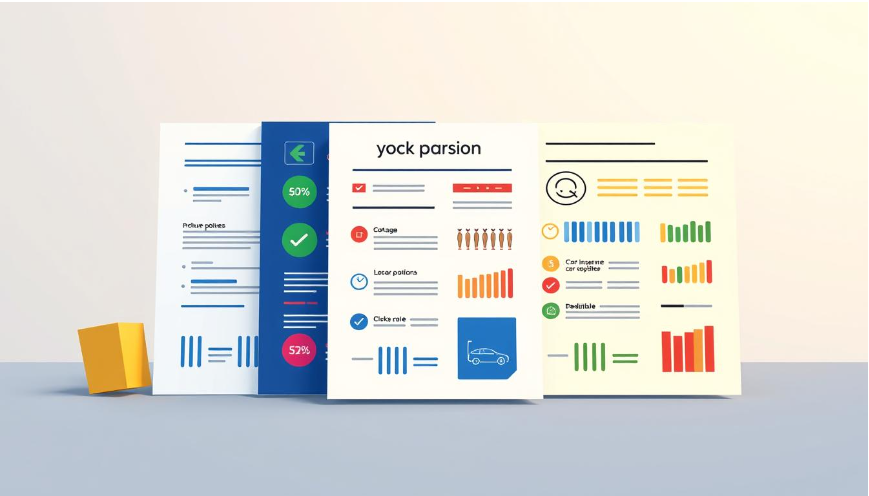
A visual representation of various types of vehicle insurance coverage, featuring distinct icons or symbols for liability, collision, comprehensive, personal injury protection, and uninsured motorist coverage, set against an abstract background with subtle automotive elements, creating a cohesive illustration that highlights the diversity of auto coverage options.
The Impact of Your Driving History on Insurance Premiums
Your driving record is key in setting your auto insurance rates. Insurers look at your traffic violations, accidents, and claims to figure out your rates. Knowing how these factors affect your premiums can help you save money.
Traffic Violations and Rate Increases
Traffic tickets can greatly increase your car insurance rates. Speeding, reckless driving, or driving under the influence are examples. These infractions show you’re a higher risk to insurers, leading to higher auto insurance rates.
Benefits of Clean Driving Records
- Keeping a clean driving record gets you the best car insurance quotes.
- Insurers give discounts and lower rates to safe drivers. They see them as less likely to file claims.
- Staying ticket-free and accident-free means lower auto insurance rates and more peace of mind.
| Driving Offense | Average Rate Increase |
|---|---|
| Speeding (15-20 mph over limit) | 20-30% |
| Reckless Driving | 30-50% |
| DUI/DWI | 50-100% |
Understanding how your driving history affects vehicle insurance pricing helps you make smart choices. It lets you keep a clean record and get the best car insurance quotes.
Maximizing Discounts on Automotive Policy Rates
Getting the best car insurance at a good price is important for many drivers. Insurance companies offer discounts to help you save on automotive policy rates. By using these discounts, you can save money and find the right car insurance comparison for you.
Multi-Policy Discounts
One way to lower your motor insurance estimates is by bundling policies. For example, insuring your car and home with the same company can save you 10% or more.
Safe Driver Discounts
Driving safely can also save you money. Insurers give discounts to safe drivers, from 5% to 25% or more. This depends on the company and your driving record.
Additional Discounts to Consider
- Good Student Discount: Students with high GPAs may get a discount on automotive policy rates.
- Defensive Driving Course Discount: Taking a defensive driving course can lower your insurance costs.
- Vehicle Safety Feature Discounts: Cars with safety features like anti-lock brakes and airbags may save you money on car insurance comparison.
Exploring different discounts can help you get the best deal on motor insurance estimates. This way, you can protect your vehicle without spending too much.
| Discount Type | Average Savings |
|---|---|
| Multi-Policy Discount | 10-20% |
| Safe Driver Discount | 5-25% |
| Good Student Discount | 10-15% |
| Defensive Driving Course Discount | 5-10% |
| Vehicle Safety Feature Discount | 5-15% |
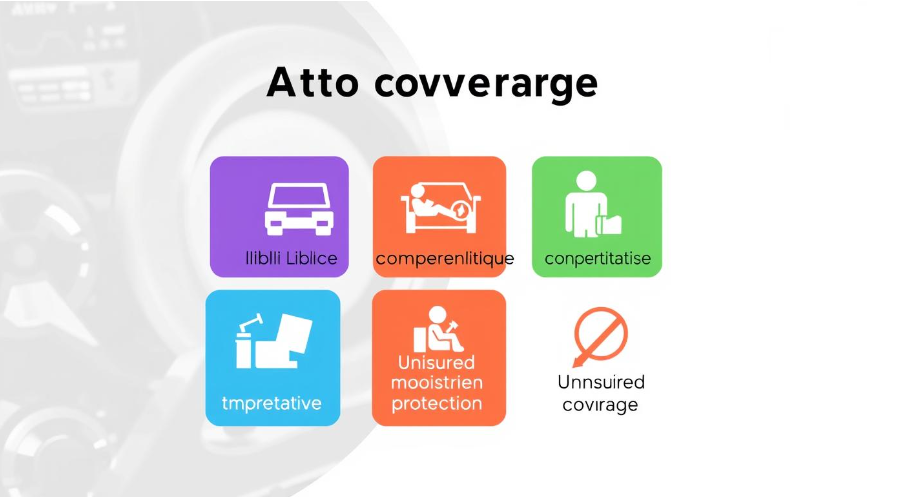
An array of colorful car insurance discount symbols, including percentage signs and dollar bills, intertwined with sleek cars parked in a serene setting, bright sunlight illuminating the scene, emphasizing value and savings, vibrant colors reflecting affordability and security.
Comparing Car Insurance Quotes from Multiple Providers
Finding the best car insurance rates means comparing quotes from different providers. Major insurance companies offer many coverage options. But, local providers might give you better service and prices. By looking at both, you can choose what’s best for you and your budget.
Major Insurance Companies vs. Local Providers
Big national insurance companies have lots of resources and are well-known. They offer many policies, from basic to full coverage. Local insurance companies, however, know the local market well. They can offer more personalized service and flexible plans, which is great for drivers with special needs.
Reading the Fine Print
It’s important to read and understand any policy, whether from a big company or a local one. Look at coverage limits, deductibles, and any extra fees. By carefully reading your policy, you can make sure you have the right coverage without surprises.
| Comparison Factor | Major Insurance Companies | Local Insurance Providers |
|---|---|---|
| Coverage Options | Extensive range of policies | Customized coverage based on local needs |
| Pricing | Competitive rates, but may be less flexible | Potential for more personalized and affordable rates |
| Customer Service | Larger customer base, potentially longer wait times | More personalized attention and support |
| Policy Details | Extensive policy documents to review | May have more concise and straightforward policy details |
Comparing car insurance quotes helps you find the best deal. Whether you choose a big insurer or a local one, always read the policy details. This ensures you get the right protection at a good price.
Understanding Deductibles and Their Impact on Premiums
Deductibles are key in vehicle insurance pricing. They are the amount you pay before your insurance helps. A higher deductible can lower your monthly costs but means you’ll pay more if you need to file a claim.
It’s important to know how deductibles affect your auto insurance rates. Here’s how deductibles can change your car policy prices:
- Higher deductibles, lower premiums: Picking a higher deductible, like $1,000 instead of $500, can cut your monthly auto insurance rates. This is because you take on more financial risk, which lowers the insurance company’s risk.
- Lower deductibles, higher premiums: On the other hand, a lower deductible means higher car policy prices. This gives you more financial protection but costs more each month.
When choosing a deductible, think about your money situation and how often you might need to file a claim. If you can afford to pay more upfront, a higher deductible might save you money. But if you want to avoid big expenses, a lower deductible might be better, even if it costs more.
| Deductible Amount | Estimated Monthly Premium |
|---|---|
| $250 | $80 |
| $500 | $65 |
| $1,000 | $50 |
The right deductible for you depends on your personal needs and money situation. By understanding deductibles’ role in car policy prices, you can choose wisely. This helps you find the best balance between coverage and cost.
A visually striking illustration of multiple car insurance policy documents laid out side by side, featuring contrasting colors and distinctive icons representing different coverage options; each document includes visual elements like graphs and charts showing prices and deductibles, set against a sleek, modern background that emphasizes the theme of comparison and savings.
Smart Strategies for Lower Motor Insurance Estimates
Choosing the right vehicle and using safety features can lower your insurance costs. These smart choices can help you save a lot on your car insurance.
Vehicle Choice Considerations
The type of car you pick affects your insurance rates. Cars with high safety ratings, lower horsepower, and smaller engines cost less to insure. Choosing a mid-size or compact car over a big SUV or luxury sedan can save you money.
Safety Feature Benefits
Buying a car with advanced safety features can lower your insurance costs. Features like anti-lock brakes and collision avoidance systems can get you cheaper car insurance quotes. This shows insurers you’re a safer driver, leading to better rates.
| Safety Feature | Average Discount |
|---|---|
| Anti-lock Brakes | 5-10% |
| Electronic Stability Control | 10-15% |
| Forward Collision Warning | 15-20% |
| Adaptive Cruise Control | 10-15% |
By choosing wisely and focusing on safety, you can cut your motor insurance estimates and vehicle coverage costs. Compare car insurance quotes and use these strategies to save on your car insurance.
Common Mistakes to Avoid When Comparing Insurance Quotes

When you compare automobile insurance premiums, it’s key to find the best deal for your car. But, there are traps that could lead to bad choices. As you look at car insurance comparison, avoid these common errors:
- Neglecting to Compare Apples-to-Apples: Make sure the car insurance quotes you compare have the same coverage and limits. If not, you might not get a clear picture of the costs.
- Overlooking Discounts and Bundling Opportunities: Insurers often give discounts for safe driving and bundling policies. Always ask about these savings.
- Ignoring the Fine Print: Read the policy details carefully. Look for exclusions and limits. Knowing these can prevent surprises later.
- Relying on Outdated Information: Make sure the quotes you compare are current. Insurance rates can change. Always check the info is fresh.
By avoiding these common mistakes, you can confidently compare car insurance. This way, you’ll make a choice that fits your needs and budget well.
A visually dynamic scene depicting a side-by-side comparison of various car insurance quotes, illustrated as colorful charts and graphs, with a sleek car in the foreground symbolizing choice and value. The background features a blurred cityscape to suggest urban living, while the quotes are represented with vibrant colors and distinct shapes to convey clarity and variety.
The Role of Credit Scores in Vehicle Insurance Pricing
Your credit score is key in setting your vehicle insurance pricing. Insurance companies see it as a sign of how likely you are to make claims. Those with better scores get better auto insurance rates.
They think people with good credit are less likely to file claims. This makes them less risky for the insurance company. So, they use your credit history to figure out your car policy prices.
| Credit Score Range | Impact on Insurance Rates |
|---|---|
| 800-850 | Lowest vehicle insurance pricing |
| 700-799 | Average car policy prices |
| 600-699 | Higher than average auto insurance rates |
| 500-599 | Highest vehicle insurance pricing |
To lower your car policy prices, keep your credit score up. Pay bills on time, keep credit card balances low, and fix any credit report errors. Improving your score can lead to lower auto insurance rates and save you money on vehicle insurance pricing.
Seasonal Changes in Car Insurance Rates
Car insurance rates can change with the seasons. Some times of the year see bigger changes than others. Knowing these trends can help you get better deals on your car insurance.
In the summer, there are more accidents, thefts, and weather-related issues. This leads to higher insurance rates. But, in winter, there are fewer claims. This means insurers can offer better deals.
Drivers can save money by shopping for car insurance at the right time. The best times are usually in the fall or early spring. At these times, insurers are more likely to offer discounts and lower rates to attract new customers.
FAQ
What are the key components of a car insurance policy?
A car insurance policy has several key parts. Liability coverage helps if you hurt someone or damage their property. Collision coverage pays for your car’s repairs after an accident. Comprehensive coverage covers damage from things like theft or weather.
Personal injury protection pays for medical bills for you and your passengers. These parts work together to protect you financially.
Why is it important to shop around for car insurance?
Shopping around for car insurance is crucial because rates vary a lot. By comparing quotes, you can find the best deal for your needs. This can save you a lot of money.
What factors influence the cost of vehicle coverage?
Many things affect how much you pay for car insurance. Your age, driving history, and where you live are big factors. So is your credit score, the car you drive, and how much coverage you want.
Insurance companies use these to figure out how much to charge you.
What information do I need to get accurate car insurance quotes online?
To get accurate quotes online, you need to give some basic info. This includes your personal details, your car’s info, and your driving history. Also, tell them what coverage you want and your deductibles.
Providing this info helps get quotes that really fit you.
What are the different types of auto coverage available?
There are several types of auto coverage. Liability coverage protects you if you cause damage or injury. Collision coverage pays for your car’s repairs if you’re in an accident.
Comprehensive coverage covers damage from things like theft or weather. Personal injury protection and uninsured/underinsured motorist coverage offer extra financial protection.
How does my driving history impact my insurance premiums?
Your driving history is very important for insurance rates. Traffic tickets, accidents, and claims can raise your rates. Insurance companies see you as a higher risk.
But, a clean driving record can get you discounts and lower rates.
What discounts are available to help lower my automotive policy rates?
There are many discounts to lower your rates. Multi-policy discounts apply if you bundle your car insurance with other policies. Safe driver discounts reward those with clean records.
Good student discounts are for young drivers. And, discounts for certain safety features on your car can also help.
What are the differences between major insurance companies and local providers?
Major insurance companies offer a wide range of coverage and often have competitive rates. Local providers, on the other hand, may offer more personalized service and understand the community better.
When comparing, think about what’s best for you and your needs.
How do deductibles affect my insurance premiums?
Deductibles are the amount you pay before insurance kicks in. Higher deductibles mean lower premiums. But, you’ll have to pay the deductible if you make a claim.
It’s a trade-off between lower premiums and higher deductibles.
How does the type of vehicle I drive impact my insurance costs?
The type of vehicle you drive greatly affects your insurance costs. Cars with high repair costs, powerful engines, and less safety tech cost more to insure. Choosing a car with safety features and a lower risk profile can save you money.
What are some common mistakes to avoid when comparing insurance quotes?
Avoid mistakes like not giving accurate info or overlooking discounts. Also, don’t assume policy details without reading the fine print. Careful research and comparison can help you find the best insurance.
How do credit scores affect vehicle insurance pricing?
Credit scores are used by insurance companies to set rates. Higher scores mean lower rates, as you’re seen as a lower risk. Lower scores can lead to higher premiums. Improving your credit score can save you money on insurance.
How do seasonal changes impact car insurance rates?
Insurance rates can change with the seasons. Winter rates might be higher due to more accidents. Knowing these trends can help you shop for insurance at the best time.

